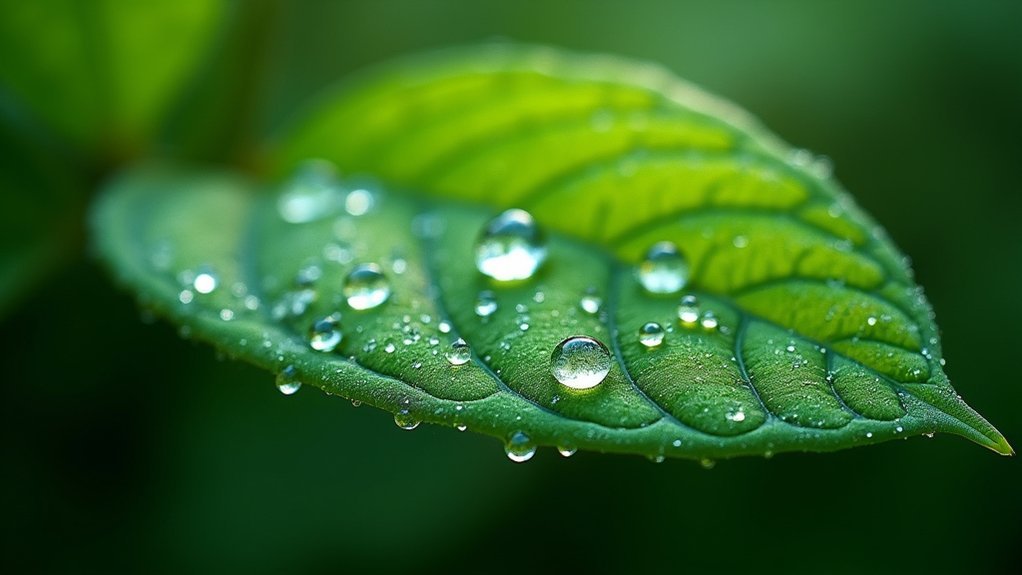To capture superior specimen images, use Spot Meter to focus exposure on specific areas while ignoring glare. Set intensity to 100% for maximum detail visibility. Experiment with different Live Speed settings—slower captures more detail, faster provides quicker feedback. Let auto exposure recalibrate when changing magnifications instead of manual adjustments. Use auto white balance for accurate color representation. These techniques reveal microstructures and patterns that remain hidden with standard settings.
5 Camera Auto Exposure Tricks For Better Specimens

When capturing detailed specimen images, your camera’s auto exposure feature can be a powerful ally rather than just a basic setting. This intelligent function automatically recalibrates as you switch between magnifications, eliminating the need for constant manual adjustments.
For ideal results, set your intensity to 100% when using auto exposure—this captures fine details without introducing unwanted glare.
The Spot Meter feature lets you target specific areas of interest, ensuring the auto exposure calculations prioritize what matters most in your specimen.
Don’t hesitate to resize the Spot Meter ROI box to dynamically adjust exposure calculations, enhancing clarity and detail capture.
Finally, regularly experiment with auto white balance alongside your auto exposure settings—this combination typically delivers the most accurate color representation under varying lighting conditions.
Leveraging Spot Meter Focus for Targeted Exposure
The Spot Meter feature stands out as one of the most powerful tools in your camera’s auto exposure arsenal.
When you’re dealing with specimens that have challenging lighting conditions, this function allows you to focus exclusively on your area of interest while ignoring surrounding glare.
By resizing the Spot Meter focus ROI box, you’ll dynamically adjust how your camera calculates pixel intensity, ensuring ideal exposure for the most critical parts of your specimen. This targeted approach enhances image clarity and detail capture where it matters most.
For forensic photography particularly, you’ll find this technique invaluable.
Simply adjust the box to encompass only your specimen of interest, and you’ll immediately notice improved detail preservation. Your camera will prioritize proper exposure of these essential elements rather than averaging across the entire scene.
Optimizing Intensity Settings to Capture Fine Details

Setting your camera’s intensity to 100% provides the foundation for capturing the finest specimen details without introducing excessive glare. When combined with auto exposure capabilities, this approach guarantees your system dynamically recalibrates as you shift between magnifications, maintaining ideal brightness throughout your examination.
- Picture perfect clarity as the illumination reveals previously invisible microstructures on your specimen’s surface.
- Sharp contrast between cellular boundaries that practically leap from the background.
- Textural details emerging with dimensional quality when intensity properly complements auto exposure.
- Forensic-level precision capturing intricate patterns that would be lost at lower intensity settings.
Experiment with both manual and auto exposure while maintaining maximum intensity to find the perfect balance.
Don’t forget to adjust your spot meter ROI box to target specific areas of interest while ignoring surrounding glare.
Balancing Live Speed Settings for Image Quality
Three critical speed settings—Fast, Medium, and Slow—determine how efficiently your camera processes live imagery.
Medium speed offers the best balance, delivering clear live image quality without taxing your system’s processing capabilities.
When you select Slow, you’ll notice enhanced detail but increased processing demands that may cause connection delays and performance issues.
Fast settings sacrifice some detail but provide quicker feedback when you’re making adjustments to your specimen.
Monitor your computer’s performance carefully when using slower settings to prevent lag that could compromise your imaging process.
Try switching between different speeds regularly to discover the ideal setting for your specific specimen and conditions. This toggle technique helps you find the perfect balance between image clarity and system performance.
Adapting Auto Exposure for Different Magnifications

When switching between magnification levels, auto exposure becomes your most reliable ally, automatically recalibrating to maintain consistent image quality across all zoom settings.
Manual settings often produce darker images at higher magnifications, limiting your ability to capture clear black and white contrasts that reveal essential specimen details.
Set your intensity percentage to 100% while using auto exposure to maximize detail capture.
Maximize microscopic revelation by running at full intensity alongside auto exposure settings.
You’ll also want to employ the spot meter feature for targeted adjustments on specific areas of interest.
- Watch as previously hidden cellular structures emerge from shadowy obscurity
- Notice the crisp definition between black edges and white backgrounds
- See minute textures transform from blurry patches to distinct patterns
- Observe how depth and dimension materialize with proper exposure
Remember to check and adjust your auto exposure settings whenever you change magnification levels.
Frequently Asked Questions
How Can I Increase the Exposure of My Camera?
You can increase your camera’s exposure by using auto exposure settings, setting intensity to 100%, utilizing spot metering for targeted exposure, adjusting manually at higher magnifications, and maintaining proper white balance.
What Is the Sunset 4 Rule?
The Sunset 4 Rule suggests you limit exposure time to 1/4 second, set intensity around 100%, use auto exposure, and employ the Spot Meter feature to focus on your specimen while avoiding glare.
What Is the Cloudy 8 Rule?
The Cloudy 8 Rule suggests you set your aperture to f/8 when shooting in overcast conditions. You’ll achieve ideal sharpness and depth of field while compensating for diffused light, reducing glare and capturing better details.
When Should I Use Auto Mode on My Camera?
You should use auto mode when working with varying magnifications, as it automatically recalibrates exposure settings to maintain image quality. It’s especially helpful for avoiding darker images that occur at higher magnification levels.
In Summary
You’ve now got five powerful auto exposure techniques to improve your specimen photography. Remember, you’re in control—use the spot meter to target specific areas, adjust intensity settings for better detail, balance live speed settings carefully, and modify exposure parameters as magnification changes. These small adjustments will dramatically enhance your images, making even the most challenging specimens appear with professional clarity and precision.





Leave a Reply